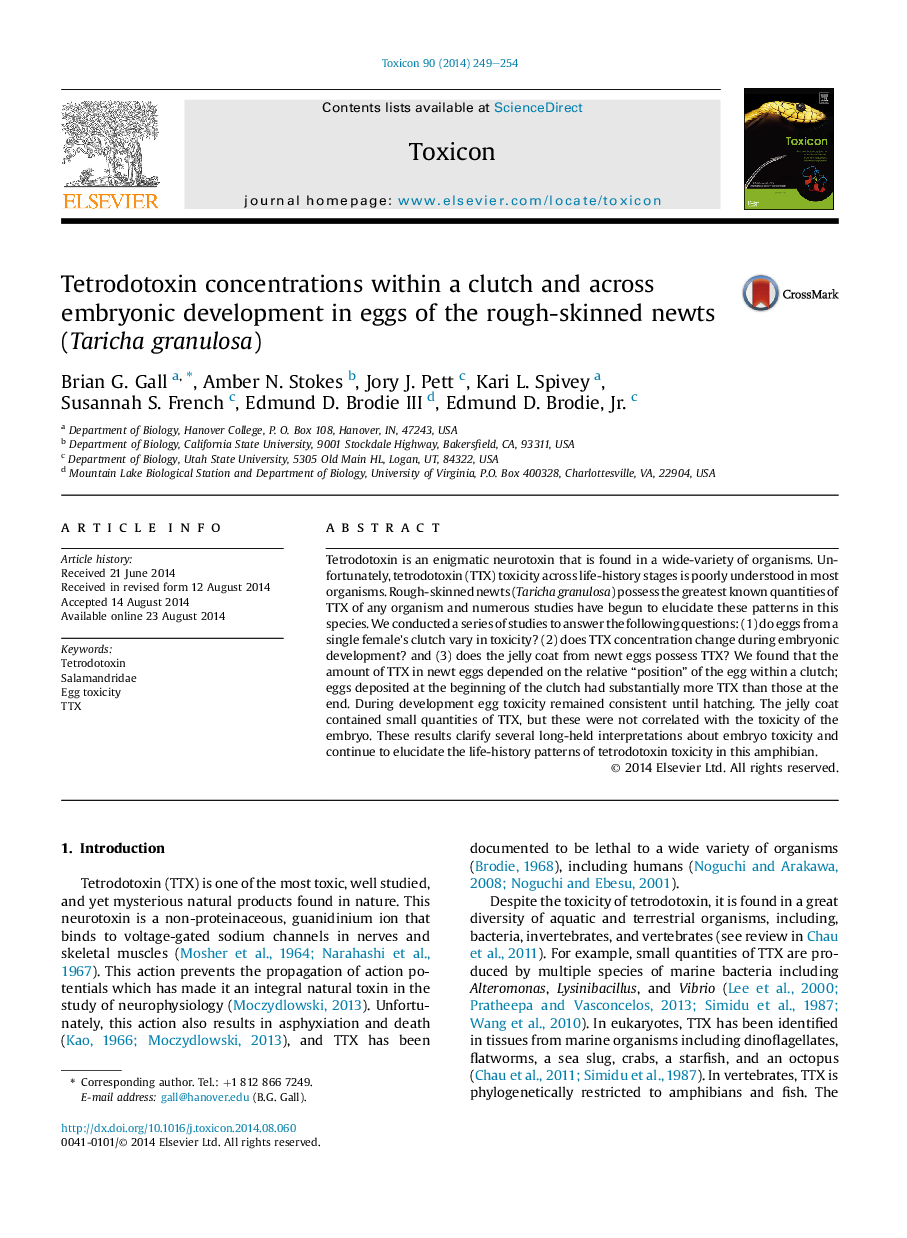| Article ID | Journal | Published Year | Pages | File Type |
|---|---|---|---|---|
| 8396195 | Toxicon | 2014 | 6 Pages |
Abstract
Tetrodotoxin is an enigmatic neurotoxin that is found in a wide-variety of organisms. Unfortunately, tetrodotoxin (TTX) toxicity across life-history stages is poorly understood in most organisms. Rough-skinned newts (Taricha granulosa) possess the greatest known quantities of TTX of any organism and numerous studies have begun to elucidate these patterns in this species. We conducted a series of studies to answer the following questions: (1) do eggs from a single female's clutch vary in toxicity? (2) does TTX concentration change during embryonic development? and (3) does the jelly coat from newt eggs possess TTX? We found that the amount of TTX in newt eggs depended on the relative “position” of the egg within a clutch; eggs deposited at the beginning of the clutch had substantially more TTX than those at the end. During development egg toxicity remained consistent until hatching. The jelly coat contained small quantities of TTX, but these were not correlated with the toxicity of the embryo. These results clarify several long-held interpretations about embryo toxicity and continue to elucidate the life-history patterns of tetrodotoxin toxicity in this amphibian.
Keywords
Related Topics
Life Sciences
Biochemistry, Genetics and Molecular Biology
Biochemistry, Genetics and Molecular Biology (General)
Authors
Brian G. Gall, Amber N. Stokes, Jory J. Pett, Kari L. Spivey, Susannah S. French, Edmund D. III, Edmund D. Jr.,
